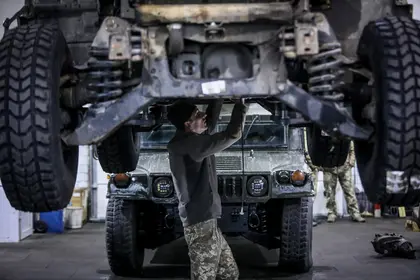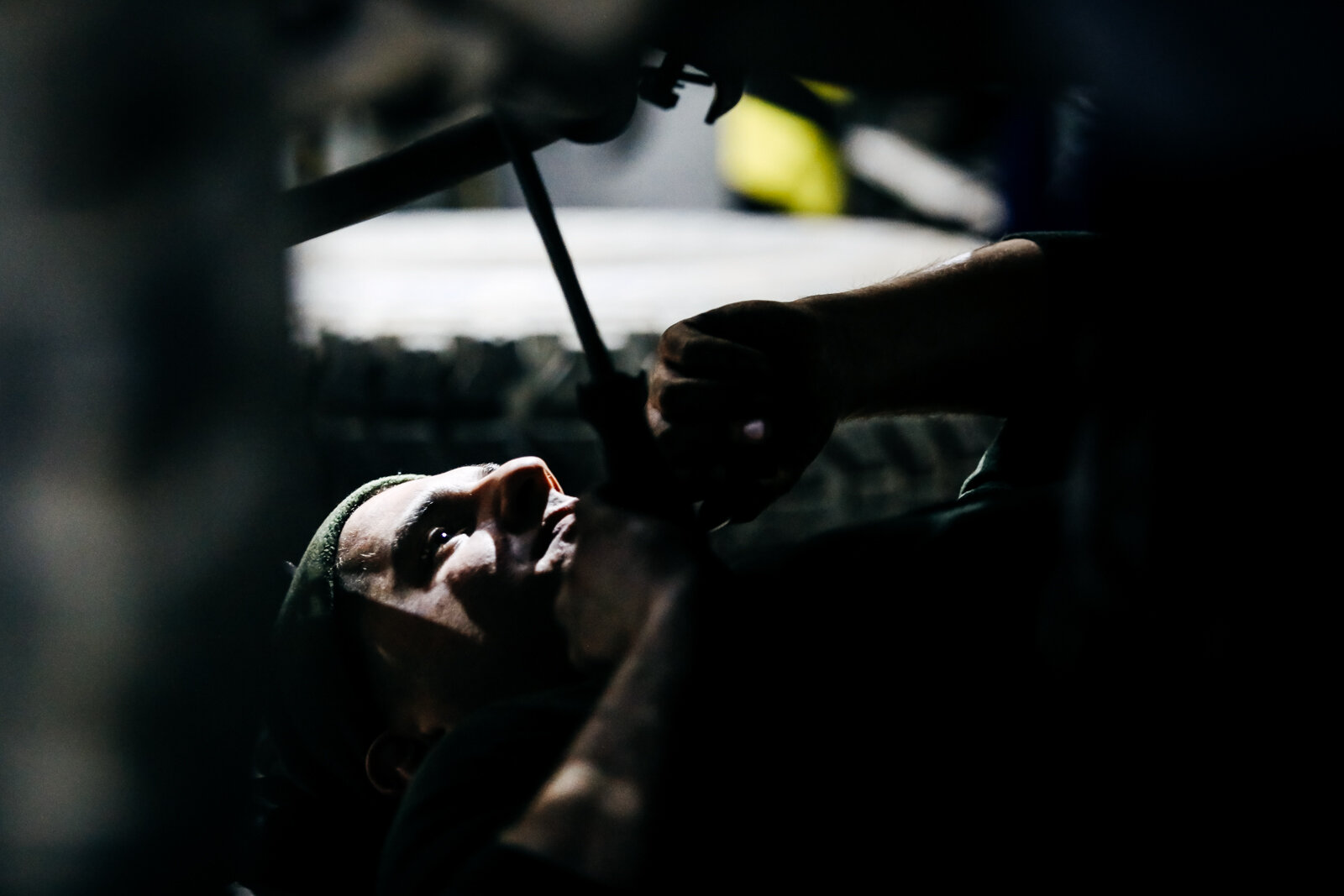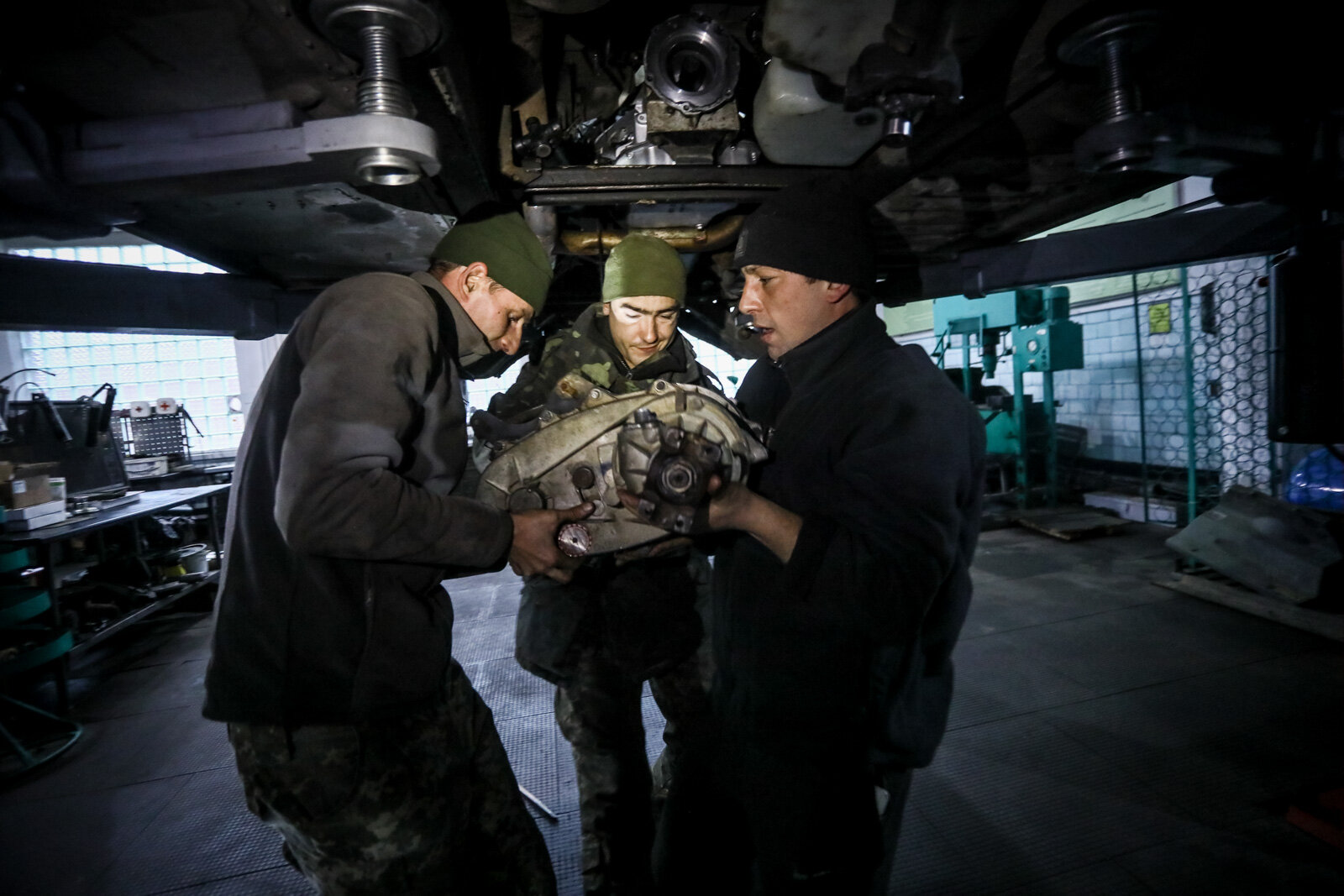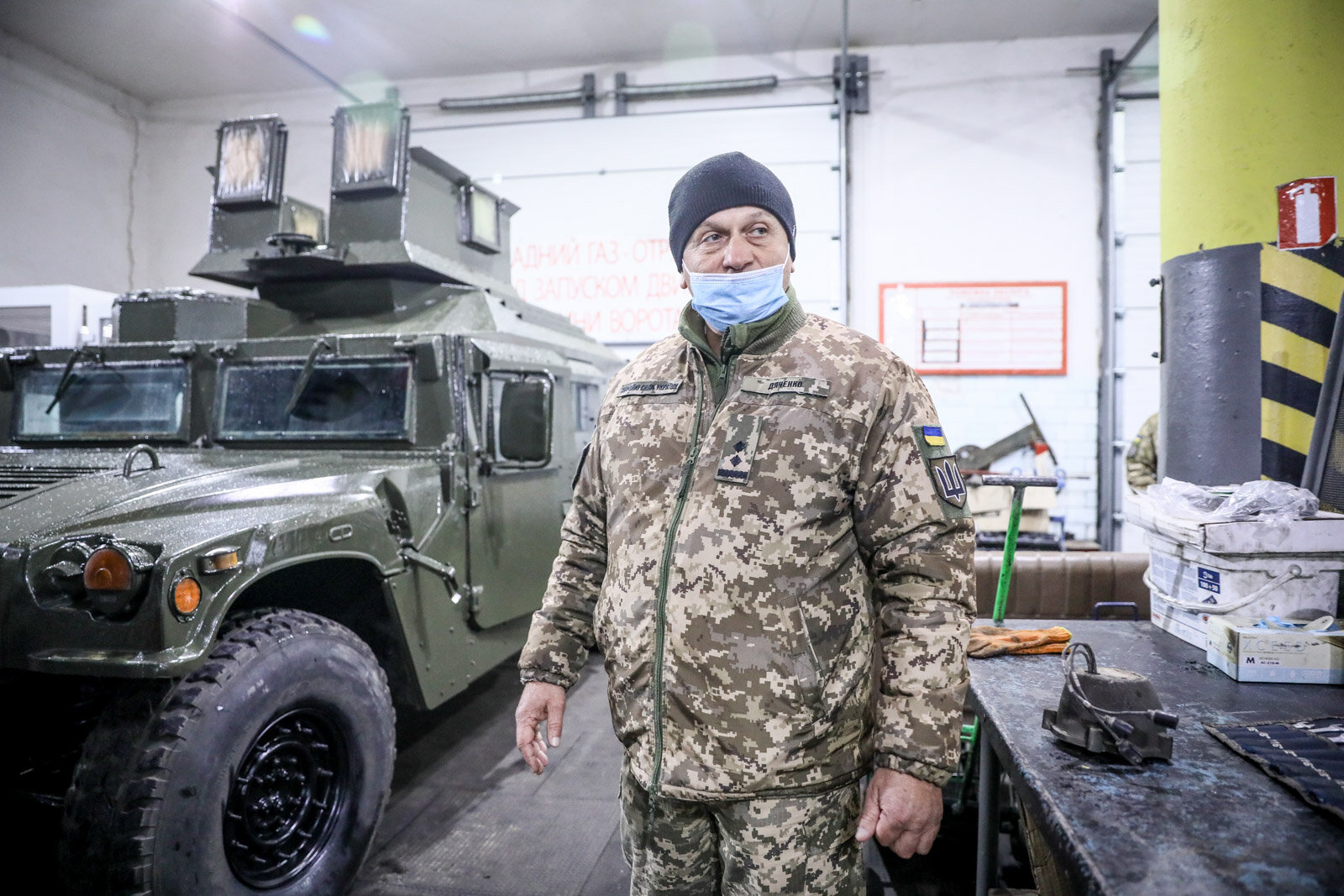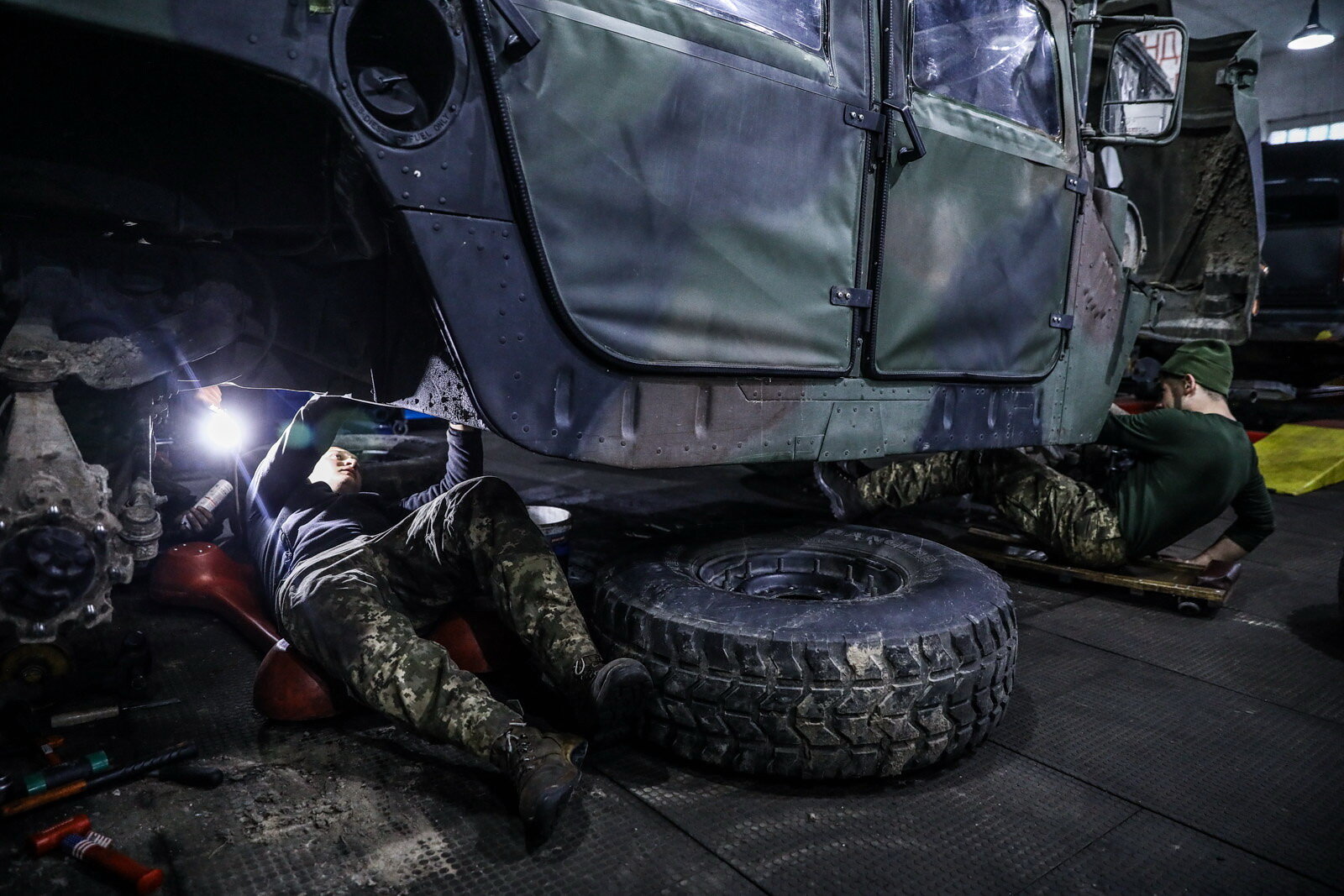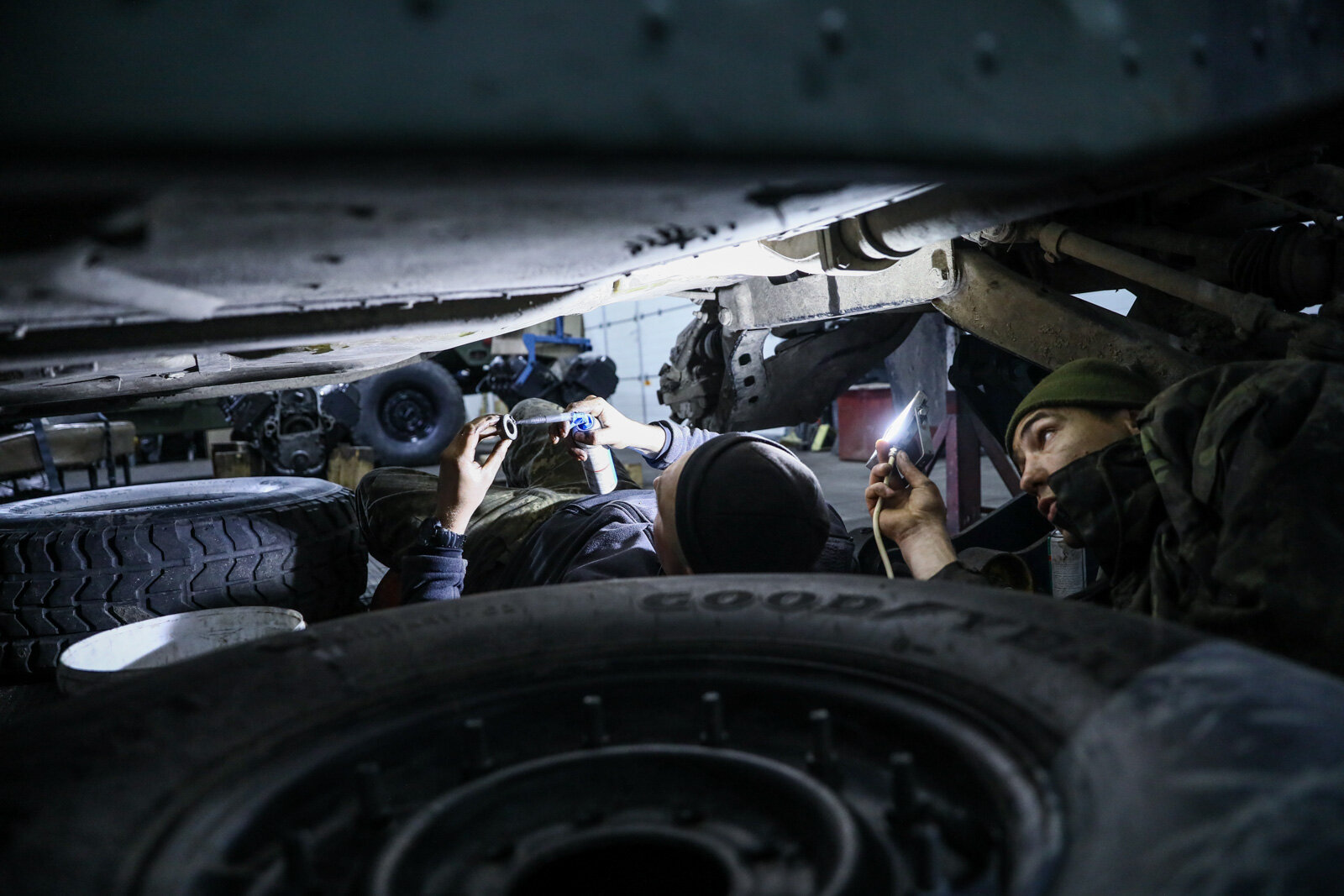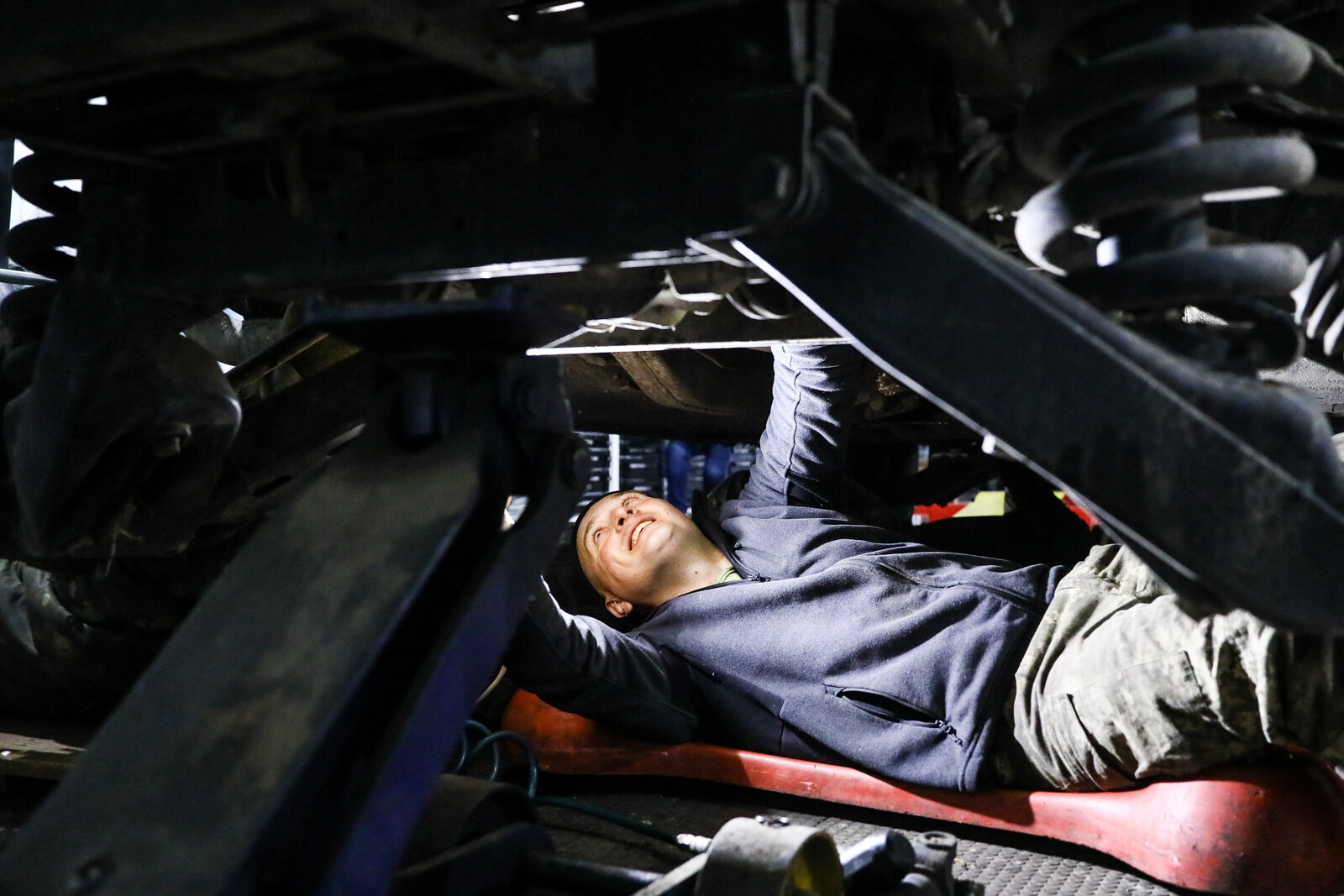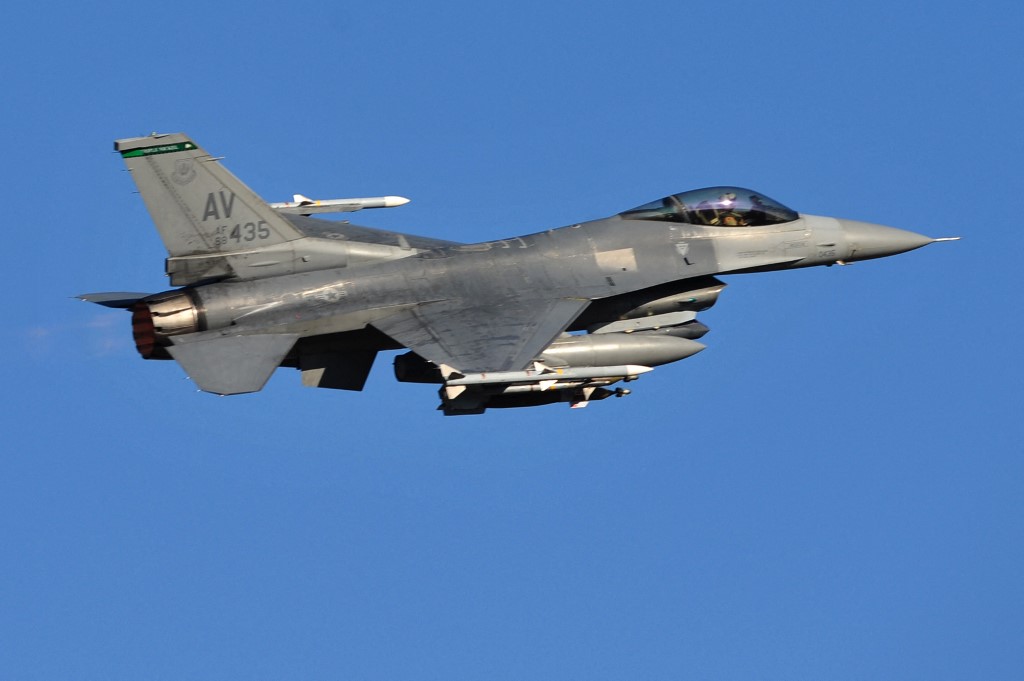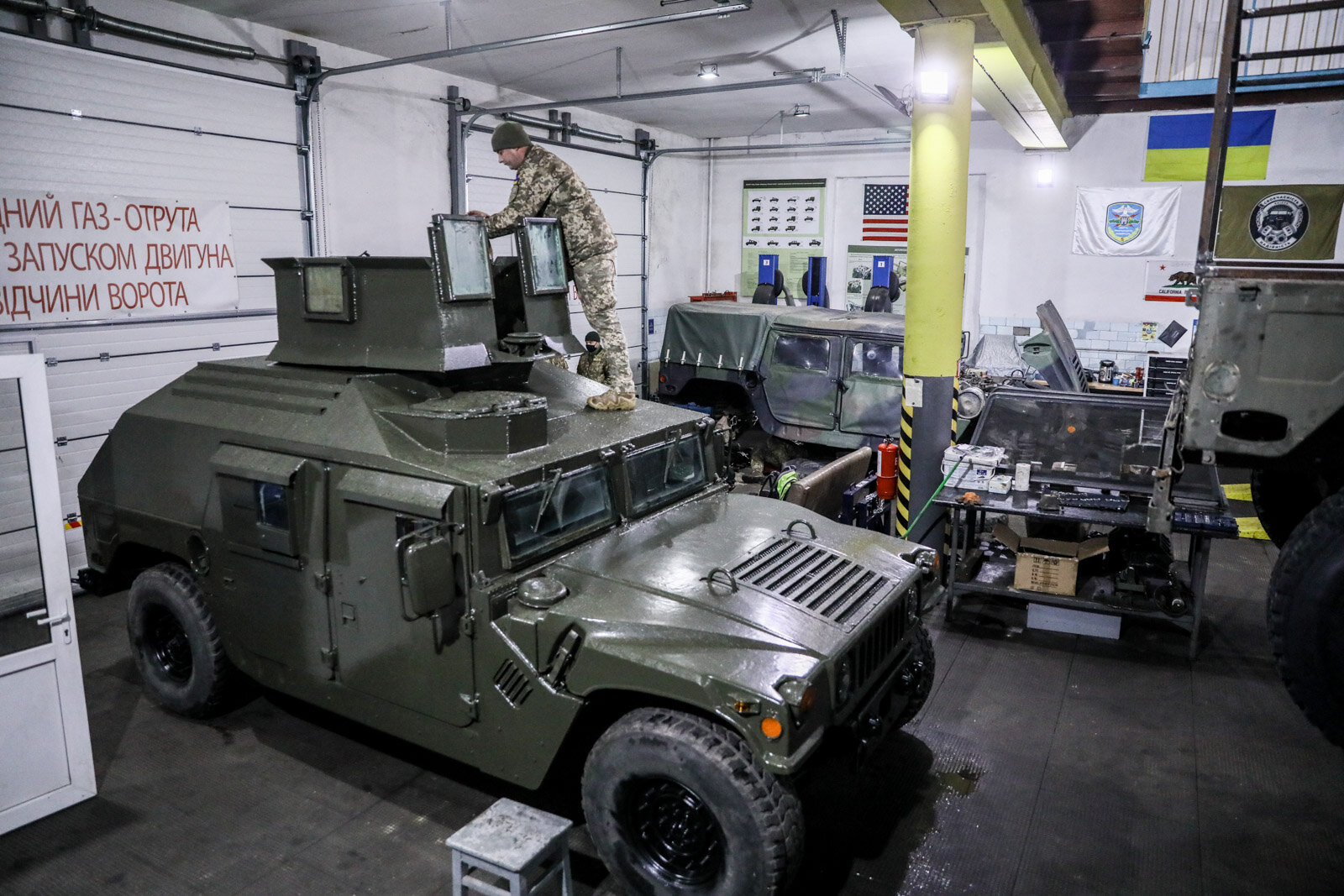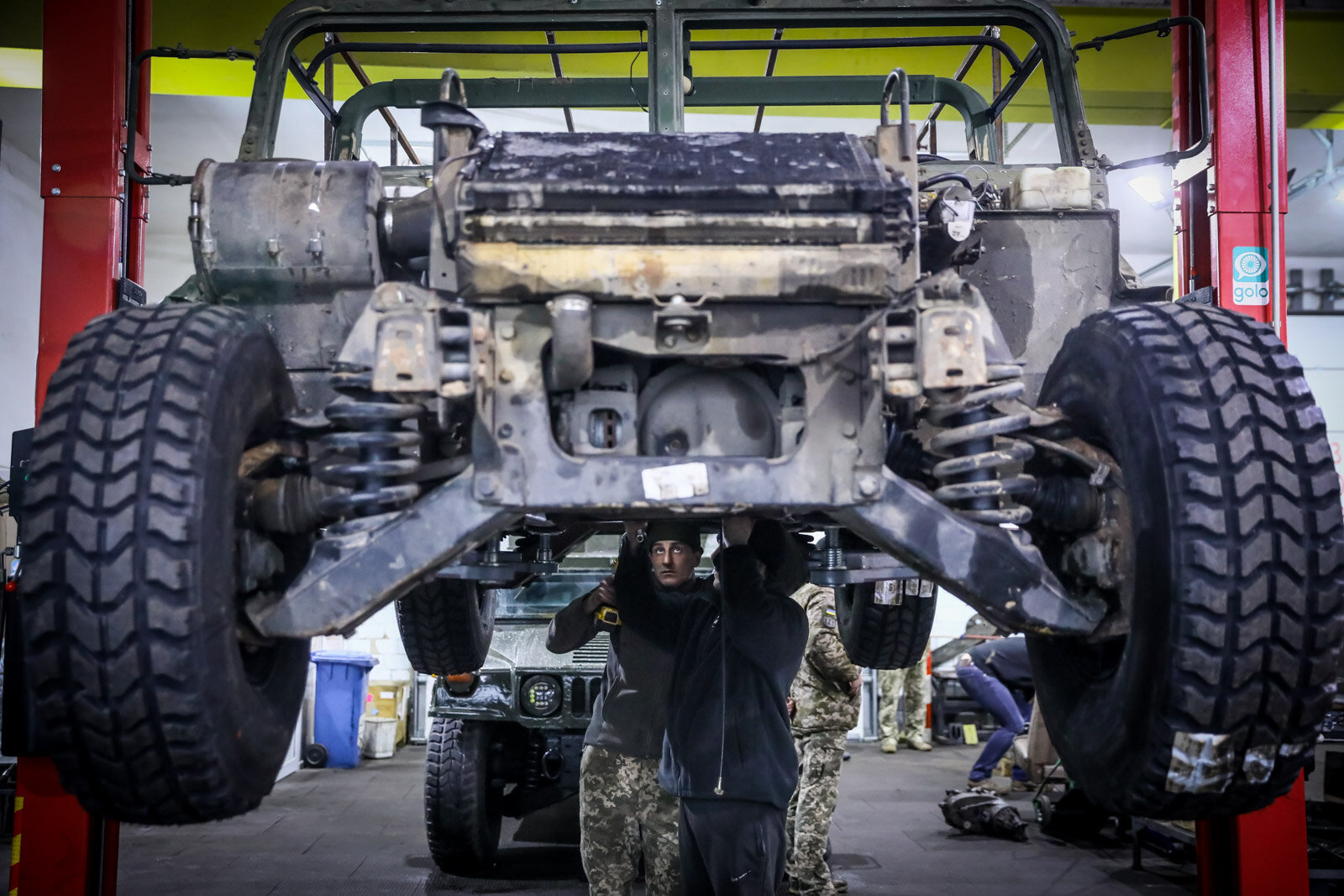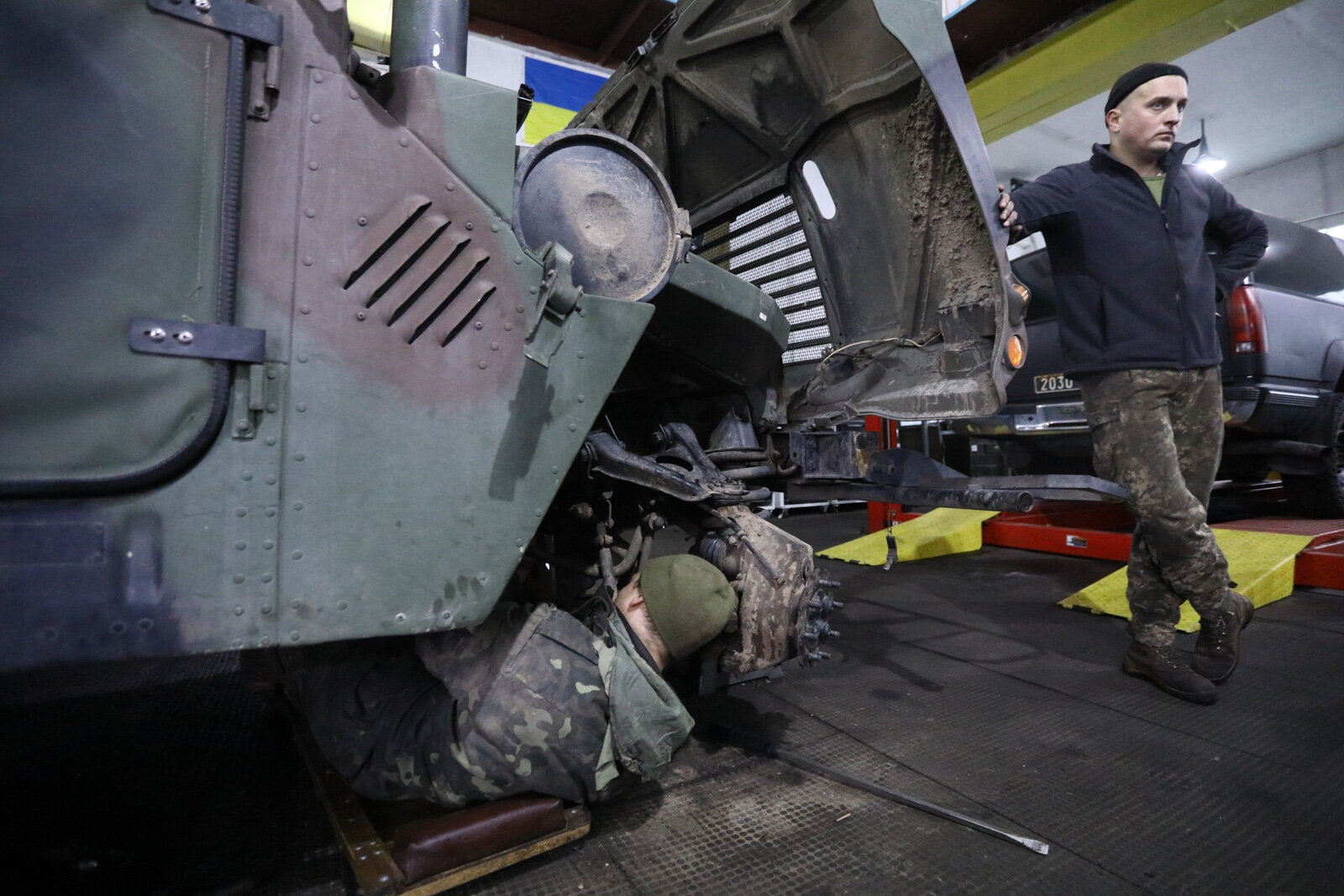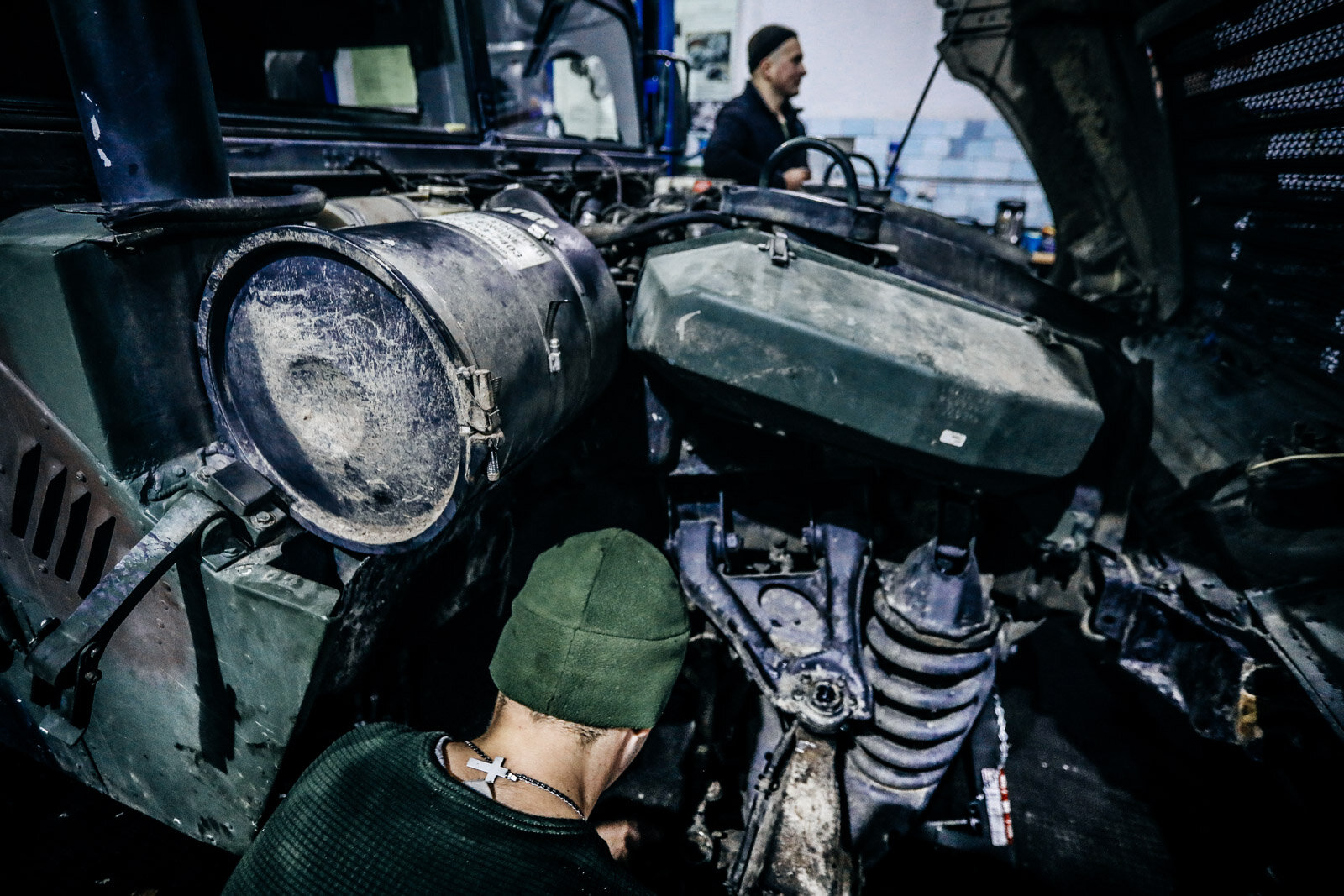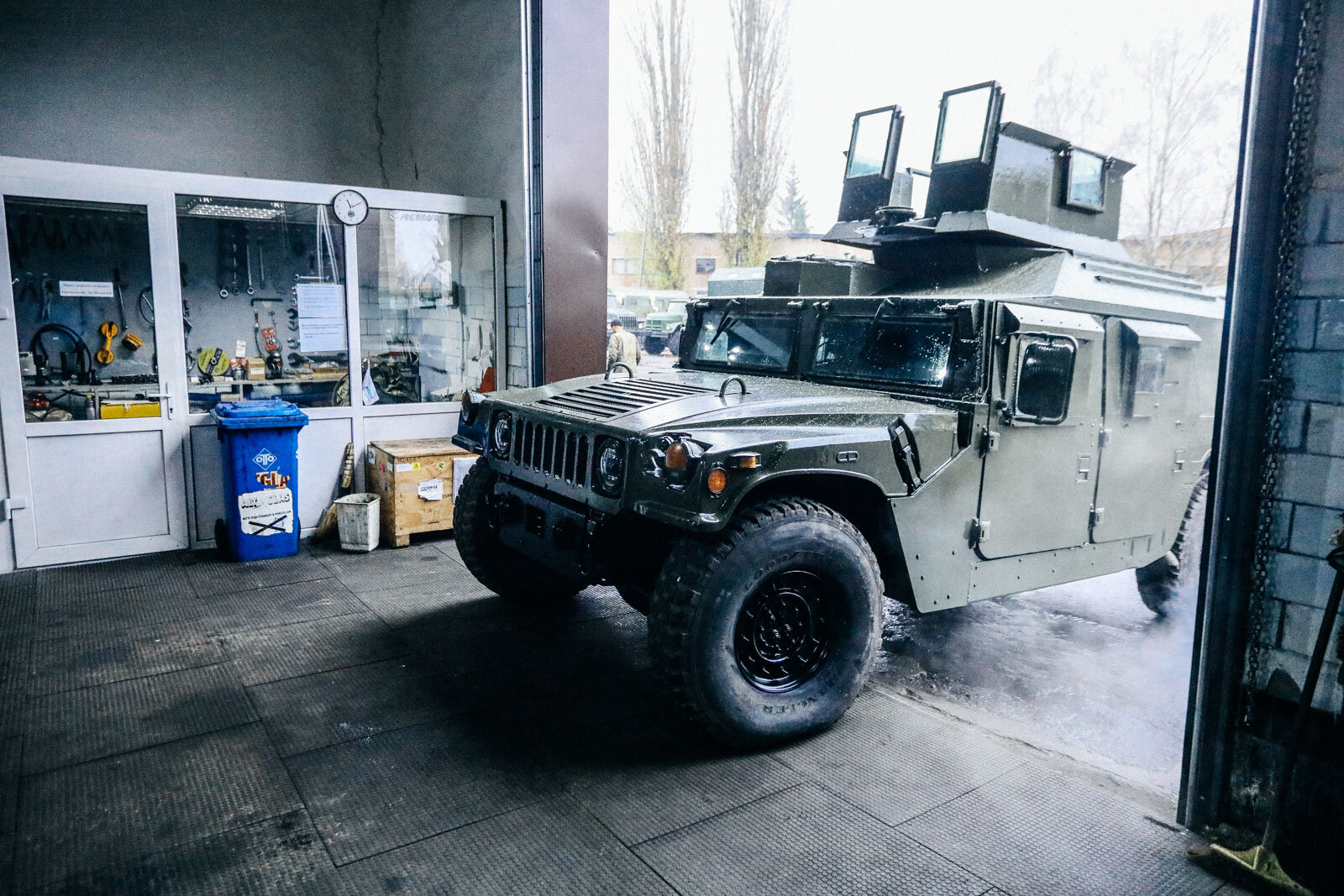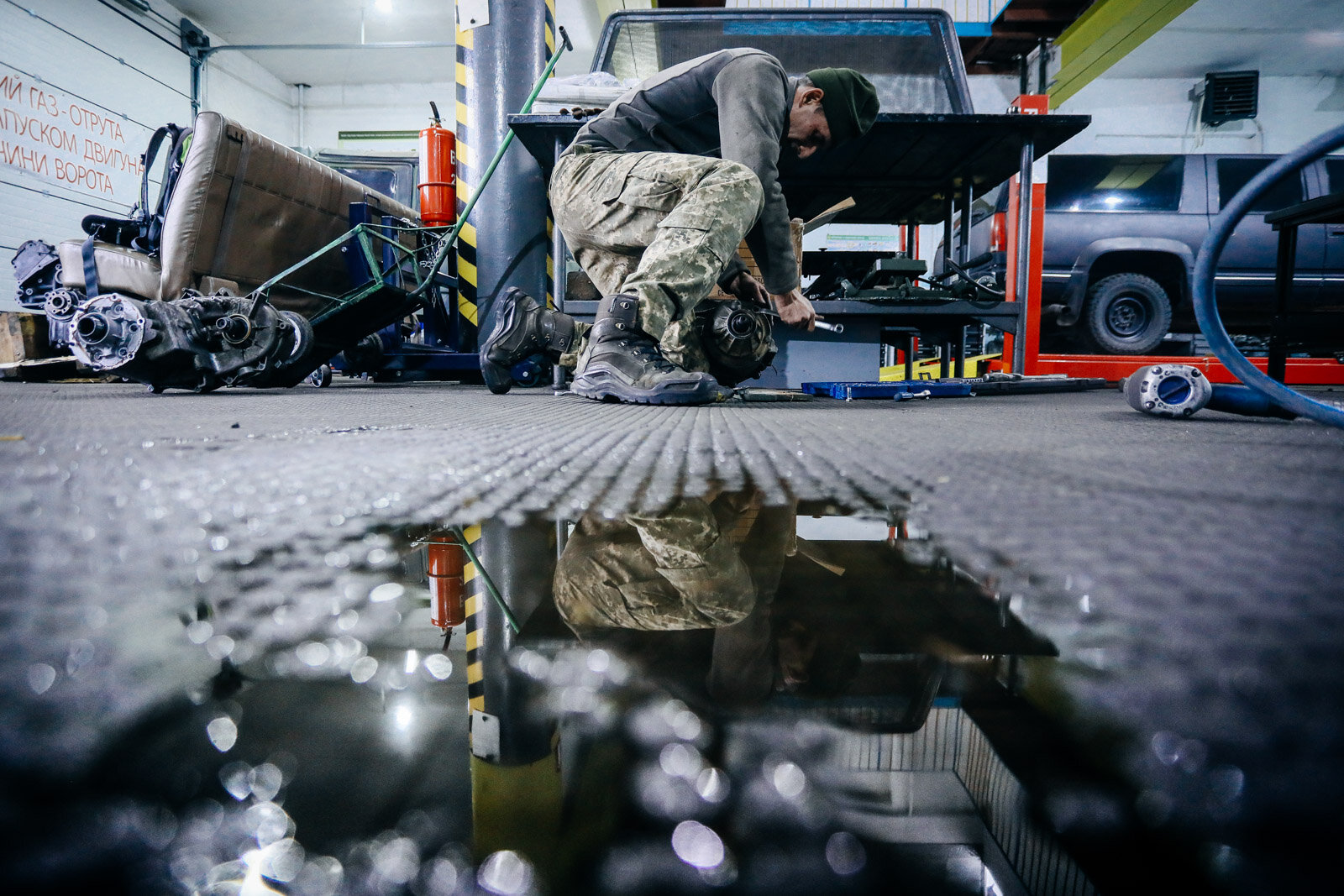ZHYTOMYR, Ukraine — The smell of diesel fuel hangs in the air amid the metallic rattle of screw keys and lift jacks.
At this Ukrainian army repair depot in Zhytomyr, work is running in full swing to the sound of light pop music on the radio.
JOIN US ON TELEGRAM
Follow our coverage of the war on the @Kyivpost_official.
Piles of huge V8 engines, transmission components, and suspension mounts are all waiting to be fixed, checked, and put back into the war machines they belong to. Mechanics in greasy camouflage fatigues are sweating over several armored trucks HMMWVs — much more commonly known as Humvees — fixing them at repair stands.
A large American flag on the wall hangs over the vehicles’ partly dismantled yellowish-green bodyworks. Alongside it are Ukrainian banners and military insignia — tokens of appreciation for the United States, thanks to whom these legendary warhorses serve Ukraine’s infantry.
This is the only workshop responsible for the overhaul of dozens of Humvees provided to the Ukrainian Armed Forces as part of U.S. defense aid amid Russia’s war in the Donbas.
For the handful of technicians, the mission is to send all these machines back to their home units on the war front as quickly as possible.
From Iraq to Donbas
These 4×4 armored trucks produced by AM General in Mishawaka, Indiana made their battlefield debut during the 1989 Operation Just Cause in Panama. They saw action in the Gulf War, as well as in Iraq and Afghanistan, as the primary light utility vehicle operated by the U.S. Army, U.S. Marine Corps, and other branches of service.
Humvees have in many ways become a symbol of America’s projection of military power. They are an irreplaceable feature of any Iraq War story on the screen, such as the iconic HBO show “Generation Kill” and the Oscar-winning movie “The Hurt Locker.”
The Humvee even has a civilian little brother named Hummer, which is produced by General Motors.
These days, however, the legendary war machines are nearing the end of their meteoric career. They will be gradually replaced with a new, sturdier, and universal series Oshkosh L-ATVs, which have yet to acquire a nickname.
But for Ukraine’s military, even comparatively old Humvees are still close to a dream. Ukraine started operating them as early as in 2001 when the U.S. sent a batch of 40 used vehicles. They were used by Ukraine’s peacekeeping forces in Kosovo.
With the outbreak of Russia’s war in 2014, the U.S. government made Humvees part of its defense aid to Kyiv. They saw fierce action in the Donbas, and some never returned from the battlefield.
Many of the Humvees in Ukraine’s formations still have interiors painted in desert camouflage colors, a reminder of their past in Iraq and Afghanistan with the U.S. military.
Today, the Ukrainian military operates over 200 Humvees, deployed to the Donbas and the Azov Sea coastline with elite airborne and marine combat units. There are even attempts underway for domestically-produced vehicles of the same class. That’s how the Ukrainian armored car Dozor-B (which also has a civilian version) was born. Still, it’s no match for a Humvee.
The beast machine
The Humvee workshop, part of the army’s large maintenance and logistics hub in Zhytomyr, a city of 266,000 people about 140 kilometers west of Kyiv, has only 10 technicians. But every year, it processes nearly 70% of all the Humvees operated by the Armed Forces.
Repairers crawling underneath dismantled hulls and working with transmission components pay absolutely no attention to visitors.
Several of them just got back from the war zone in the Donbas. When it’s possible to get the job done without sending the vehicle for a major overhaul in Zhytomyr, mechanics hit the road and do all the repairs just behind the trench lines.
Despite the Humvee’s reputation for reliability, the Donbas often gives its running gear a hard time.
“The thing is that troops naturally very often have to prioritize personnel survival at the expense of hardware health,” says the workshop’s commanding officer, Lieutenant Colonel Yuriy Dyachenko.
“During heavy shelling assaults, troops need to get out of killing zones, and no one thinks about the Humvee’s undercarriage, engine, and automatic transmission. So these components quickly become unserviceable — and that’s when they call us.”
In general, the officer said, the iconic American vehicle works well in the Donbas steppes, which are similar to the deserts of Iraq and the urban slums of Mogadishu in Somalia.
“But here in Ukraine, our marine and airborne units often have good drivers who are not very good at maintaining their vehicles,” Dyachenko said.
“They use the wrong engine grease or use their gearshifts improperly. And the Humvee’s transmission breaks — and it costs $7,000.”
In many ways, the Ukrainian military loves these machines for their simplicity, their speed off the road, and their reliability. Armored models demonstrated good survivability in the Donbas war, while battlefield ambulance versions have been better than anything Ukraine has of its own making, according to the repairers.
What the Ukrainian military particularly appreciates is the Humvee’s automatic transmission. This proved extremely helpful in situations reminiscent of Ridley Scott’s “Black Hawk Down” — when a driver is suddenly killed or badly wounded and anyone sitting next to him can still get the vehicle out of the killing zone.
“What is really good about Humvees, is that this is a vehicle created by military-minded people,” says Lieutenant Ivan Lukisha.
“They simply have nothing unnecessary.”
A heavily armored Humvee (nicknamed Simeon for some reason) with a machine gun turret on top of it starts up after an order from one of the repairers. Its eight-cylinder diesel engine rocks the workshop with a loud low roar.
“A beast of a machine,” technicians laugh, gladly smacking the vehicle’s hood. Despite having to deal with these cars every single day, they all still have a big love for them.
The garage door opens and the Humvee backs up into a forecourt parking lot washed with a pouring rain — the vehicle is ready to be sent back to its combat unit.
Jacks of all trades
The workshop’s specialists have also had a chance to exchange experiences with their American brothers.
In 2018, several young technicians were invited to visit a California National Guard repair workshop in Sacramento to see how Humvees are maintained in their homeland.
What the Ukrainians saw in California did surprise them a lot.
“We discovered that each of us in Ukraine has to do way more work than the Americans,” says Junior Lieutenant Oleksandr Demianenko.
“And they do not have to do many things we are obliged to do. For instance, if an injection pump breaks down, they do not fix it — they simply replace the whole engine. Meanwhile, we have to tear the engine apart and repair it until it works again.”
In California, a Humvee that is not a top priority may stay in the workshop for up to a month — which was a shock for the Ukrainians, who are expected to carry out a vehicle’s complete overhaul in only seven days.
“Americans are very narrowly specialized. A guy fixes one very specific component and then gives the vehicle to another guy to get another certain thing fixed. And here we are required to be able to do almost anything with these Humvees,” Demianenko says.
“It’s just a totally different level.”
Moreover, according to the Ukraine-U.S. deal, Ukraine’s military can dispose of Humvees only with direct permission of the U.S. government, unless a vehicle is totally destroyed in action.
The following year, American mechanics made a reciprocal visit to Ukraine. They spent two weeks at the workshop in Zhytomyr, sharing some extra tips and also learning about the Ukrainian experience.
As a mark of respect to their colleagues, they left behind a California state flag signed by all of them. The flag has been on a workshop wall ever since then.
“You know what the Americans said after they saw how we have to work here?” a repairer asks.
“You guys are fucking crazy!”
You can also highlight the text and press Ctrl + Enter


